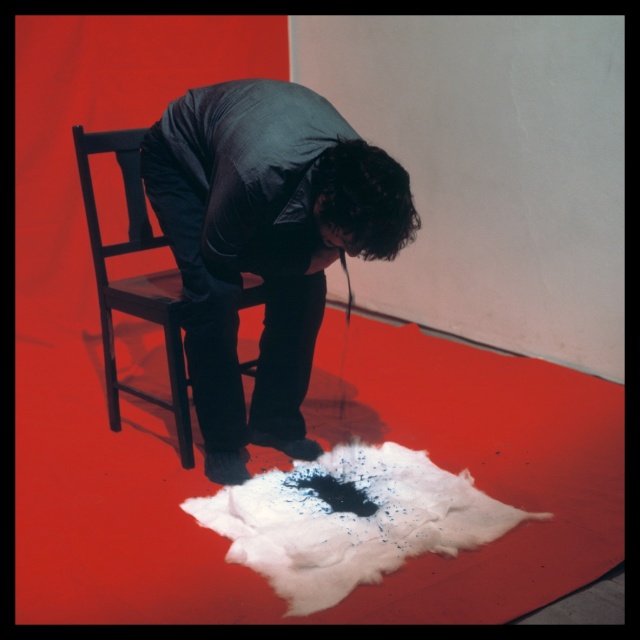BOOK HERE

Kazuo Shiraga, Challenging mud
Lecturer: Alan Schacher
Venue: Rayner Hoff project Space, Building 11 NAS
For this workshop I’d like to posit a few questions:
What is the connection between drawing and performance ?
What is the role of the artists’ body in the art-making process ? and then in its presentation?
What is the role of gesture and action and can art-making constitute an act of performance?
Finally, is there a difference between a trace and a relic ? between documentation, and the aftermath ?
The appeal of performance lies in its immediacy and physicality. Its trace lies in the environment, in the memory of the witness, in any documentation and in any relics, detritus or product produced in the act.
Performance demonstrates a balance between desire, compulsion, and energy on the part of the artist – and the impulse and pressure of the act to be brought into existence.
So in this workshop we’ll examine the trace in the art-making process.
To “trace” is to draw the outline of something that already exists. You can also “draw a conclusion”.
In this workshop you will work consciously with the idea of the trace and try to produce it many times. Observing your process to seek unity between body, concept, environment, medium, action, gesture and outcome. We will be attempting whole-body gesture and complete engagement with a medium.
Performance may be temporal and durational. So how do we exhibit the unseen processes of the artist ? The object in this workshop is not the end product. The artwork as result is a representation, but is it the true trace ?
The tasks we will pursue include observation, sensing, documenting, witnessing, remembering. You will need to improvise, respond, question, provoke, attack, surrender.
We will work with the idea of the trace as something to be consciously produced as an outcome of process. And try to develop unity between body, concept, environment, medium, action, gesture and outcome. We will be attempting whole-body gesture and complete engagement with a medium. Through internal and external observation, response to a situation or place or material you will “draw upon” burning issues, persistent images, ethereal essences, cultural beliefs and differences and familial histories.

Richard Serra
Research
Here are just a few ideas on how to research this topic. I hope you can discover some more contemporary examples than mine for us to discuss !
The images provided represent a range of artists, myself included, who push their relationship with their medium physically. In so doing they straddle multiple artform genres. Richard Serra throwing molten lead, Japanese Gutai artist Kazuo Shiraga wrestling with mud, American-Chinese artist Cai Guo Qian creating works in explosions and smoke, English performer John Court who works with endurance, Australian Mike Parr using his own skin as canvas and his body as producing agent, French artist Gina Pane marking out territory on her own flesh (and representing pain as does Parr), Italian artist Franko B painting a fashion walkway with his own blood, Japanese artist Chiharu Shiota drawing in space with thread, and the example of Chinese water calligraphy, where the text written immediately evaporates.
All these are examples of the notion of the trace, of drawing in space and time, even if the end result is a frozen moment.
The performative act need not be executed by the artist, both Cai Guo Qian and British artist Cornelia Parker have employed fire and explosives activated by specialists to generate a moment of altered matter. In the Art Gallery of NSW there is a permanent work by famous Greek Sculptor Jannis Kounellis that includes smoke marks on the walls left by burning gas. Other examples lie in the field works and temporary engagement with the natural environment by seminal British artists such as Richard Long and Andy Goldsworthy.

Mike Parr

Gina Pane

Cornelia Parker
Lecturer:
Alan Schacher is a Performance Artist with many years practice in performance-making and devising. His current practice is principally solo, but he also collaborates with performer WeiZen Ho to generate cross-cultural themes and imagery, and examine their misunderstandings and respective inheritances. From backgrounds in dance, contemporary theatre and visual arts, his interests are in Diaspora as a global condition, in architectural experience, and in the performativity of public space. He was the founder of Performance Ensembles Gravity Feed and Gravity Research Institute.

Alan Schacher, Sweet Separation, Sydney, 2017